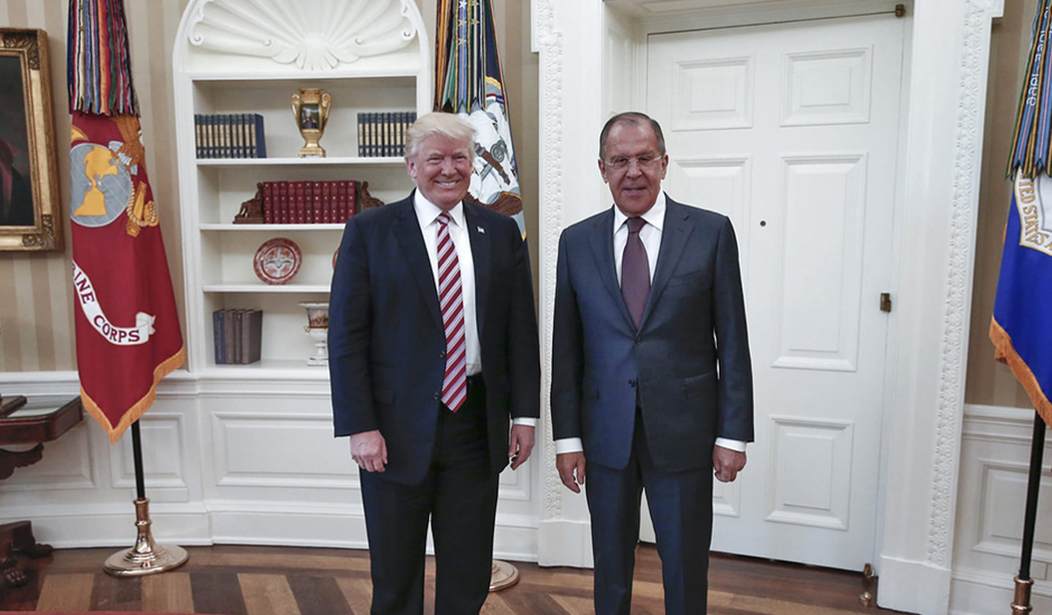WASHINGTON — The White House pushed back on reports that President Trump disclosed highly classified “code word” information to Russian Foreign Minister Sergey Lavrov and Ambassador Sergey Kislyak while boasting of his “great intel” in an Oval Office meeting last week.
The Washington Post story, followed by a New York Times report, quickly stoked concerns on both side of the aisle, with Senate Foreign Relations Committee Chairman Bob Corker (R-Tenn.) telling reporters on Capitol Hill, “To compromise a source is something that you just don’t do.”
“That’s why we keep the information that we get from intelligence sources so close, is to prevent that from happening,” he added.
The Post reported that during the meeting Trump shared information “provided by a U.S. partner through an intelligence-sharing arrangement considered so sensitive that details have been withheld from allies and tightly restricted even within the U.S. government,” a disclosure that “jeopardized a critical source of intelligence on the Islamic State.” The intelligence partner had not given the U.S. permission to share the information with Russia, and the paper cited unnamed officials expressing fear about the future of the extremely difficult endeavor to get intel from inside ISIS.
Thomas P. Bossert, assistant to the president for homeland security and counterterrorism, apparently recognizing the scope of the damage that could be caused by the disclosure, allegedly hopped on the phone with the CIA and National Security Agency after the Trump meeting. The paper also reported that internal editing and limited distribution of the transcript of the meeting was sought to protect the compromised information.
The disclosure reportedly came in the context of talking about the terror threat that drove the Department of Homeland Security to ban laptops and tablets from the cabin of certain inbound flights to the United States, a ban expected to soon be widened to include flights from Europe. The Post said an official told them that Trump told the Russian officials before describing the intelligence, “I get great intel. I have people brief me on great intel every day.”
Trump did not reveal the specific source or the methods, the story says, but revealed the specific city in ISIS territory involved in the plot and details that would make the source identifiable to Russian spy services. The paper said it withheld the name of the city at the request of U.S. intelligence services.
Deputy National Security Advisor Dina Powell called the story “false.”
“The president only discussed the common threats that both countries faced,” she said in a statement.
Secretary of State Rex Tillerson said during the meeting “the nature of specific threats were discussed, but they did not discuss sources, methods or military operations.”
The White House later sent National Security Advisor H.R. McMaster outside for a brief statement, declaring “the story that came out tonight as reported is false.”
“The president and the foreign minister reviewed a range of common threats to our two countries, including threats to civil aviation. At no time, at no time, were intelligence sources or methods discussed. And the president did not disclose any military operations that were not already publicly known,” McMaster said.
“Two other senior officials who were present, including the secretary of the State, remember the meeting the same way and have said so. Their on-the-record accounts should outweigh those of anonymous sources,” he added. “And I was in the room. It didn’t happen.”
McMaster went back into the White House without taking questions from reporters.
Greg Miller, one of the reporters on the Post story, told CNN that the White House was “playing word games” to “blunt the effect” of the report, as his report indicated that Trump did not get into sources and methods but the contents of the intelligence.
The New York Times story added that, while the president has broad declassification powers, the ally whose intel was shared “has repeatedly warned American officials that it would cut off access to such sensitive information if it were shared too widely.”
Senate Minority Leader Chuck Schumer (D-N.Y.) said that “if the report is true, it is very disturbing.”
“Revealing classified information at this level is extremely dangerous and puts at risk the lives of Americans and those who gather intelligence for our country,” Schumer said. “The president owes the intelligence community, the American people, and Congress a full explanation.”
House Speaker Paul Ryan’s (R-Wis.) spokesman Doug Andres said Ryan likewise “hopes for a full explanation of the facts from the administration.”
“We have no way to know what was said, but protecting our nation’s secrets is paramount,” Andres said.
House Minority Leader Nancy Pelosi (D-Calif.) said that if Trump “unwittingly blew a highly classified code-word source to the Russians, that would be dangerous enough; if the president outed a highly classified code-word source intentionally, that would be even more dangerous.” She called for a “full briefing on the extent of the damage President Trump has done.”









Join the conversation as a VIP Member